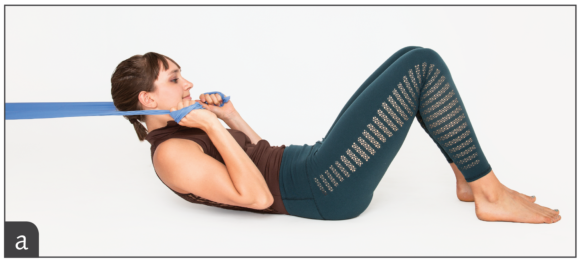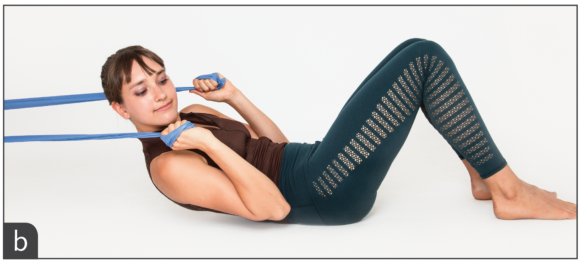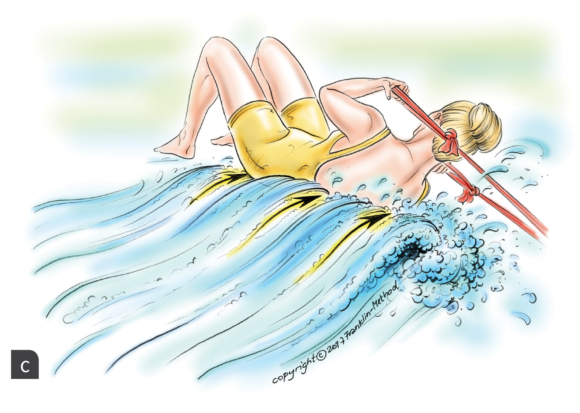Advanced conditioning for the abdominal muscles
This is an excerpt from Conditioning for Dance 2nd Edition With Web Resource by Eric Franklin.
Abdominal Twist and Wave Support
The upper abdominal twist emphasizes strengthening the rectus abdominis and the obliques. It also activates the intercostal (between the ribs) muscles that are actually the continuation into the rib cage of the line of pull of the obliques. This exercise may make traditional crunches seem effortless. It is another example of advanced conditioning for the abdominal muscles, and you should not perform it if you have a back problem. For a reduced level of resistance, perform the exercise without the resistance of the band.
- Attach a band to a fixed object about 10 inches (25.4 cm) off the ground. Lie supine, facing away from the attachment of the band.
- Hold a loop of band around each hand, and place your hands next to your head. Alternatively you can position your hands behind your head to create a cradling support. The knees form a 90-degree angle.
- Lift your head off the floor, one vertebra after another, keeping your hands next to your head. The back rim of your pelvis remains on the ground (figure a).
- Twist your upper body to the right and then to the left (figure b). Return to center.
- Visualize the sliding of the rectus and oblique abdominal filaments.
- Focus on lengthening the spinal muscles as you roll up. Imagine that they could provide the power to lift you.
- Roll back down to the floor, vertebra after vertebra, and repeat the movement as soon as your head touches the floor.
- Think of being supported by water, as if you were made of cork. Imagine the water pushing you up, and back and forth, as you twist (figure c).
- To increase the effect on the obliques, drop your legs toward the opposite direction of your torso.



More Excerpts From Conditioning for Dance 2nd Edition With Web Resource
SHOP

Get the latest insights with regular newsletters, plus periodic product information and special insider offers.
JOIN NOW
Latest Posts
- Authenticity was key to McKinney’s NIL success
- AI—A new tool for sport PR pros
- Essential skills for sport PR practitioners
- Employ these tactics when pitching a story to the media
- How does ergonomic analysis and intervention enhance safety and reduce injury risk?
- Common movement patterns in competitive cycling


